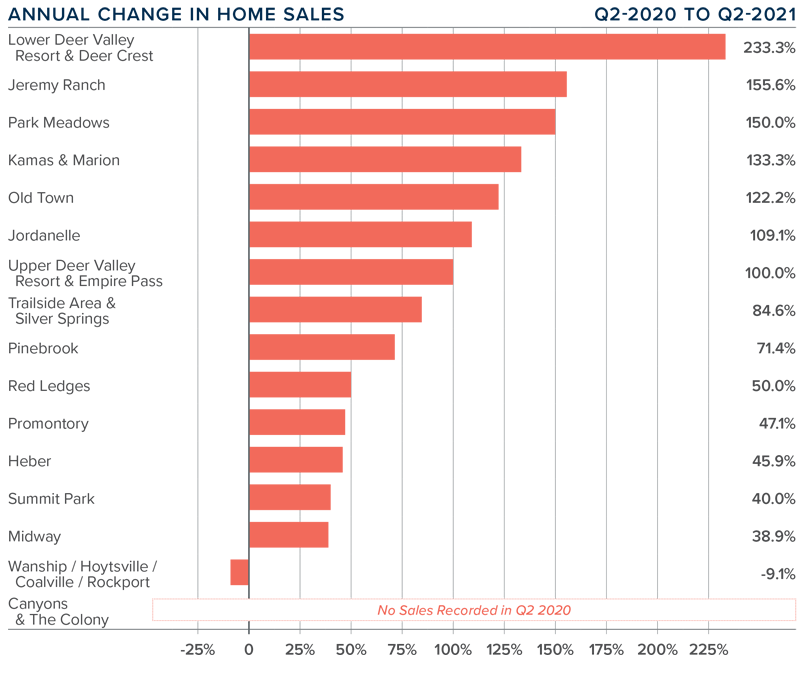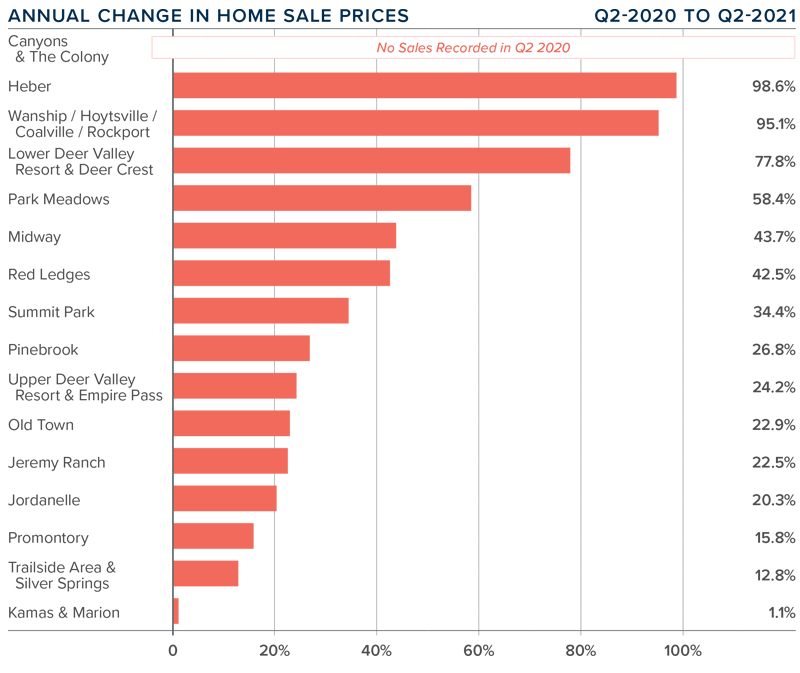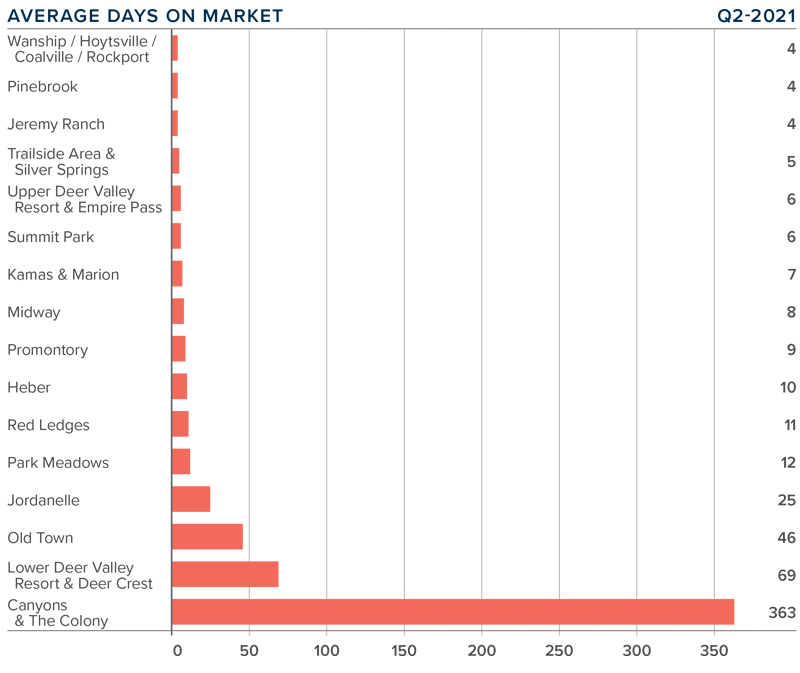
The following analysis of select neighborhoods in the Park City real estate market is provided by Windermere Real Estate Chief Economist Matthew Gardner. We hope that this information may assist you with making better-informed real estate decisions. For further information about the housing market in your area, please don’t hesitate to contact your Windermere Real Estate agent.
REGIONAL ECONOMIC OVERVIEW
Utah’s impressive post-COVID job recovery continues unabated. In the first quarter Gardner Report, I reported that the state had not only recovered all the jobs that were lost due to the pandemic, but employment was continuing to rise. This trend has continued. With 96,400 jobs added over the past year and 14,500 over the past quarter, total employment is now 26,900 jobs higher than the pre-pandemic peak. The only other state in the country that has recovered all the jobs lost due to COVID is Idaho. With a full recovery in the job market, it’s no surprise the jobless rate dropped further to 2.7% in June—its lowest level since March 2020 and the second-lowest rate in the nation; only Nebraska is lower at 2.5%.
PARK CITY, UTAH HOME SALES
❱ In the second quarter of 2021, 76 homes were sold in Park City, more than doubling the total number of sales in the same quarter a year ago, but down 12.6% from the first quarter of this year.
❱ Sales rose in all but two markets and doubled in seven of them. However, I would note that the pandemic was gripping the nation last summer, which clearly impacted sales and skewed growth-rate data.
❱ Although the number of homes for sale rose 12.3% from the first quarter, inventory levels were 47% lower than a year ago, which is impacting sales. I would like to see more homes come to market in the second half of the year, but I am not sure that will be the case.
❱ Pending home sales were 22.6% higher than a year ago, but down 28.3% from the first quarter of 2021 due to persistent supply limitations.

PARK CITY, UTAH HOME PRICES
❱ The average home price in Park City rose 53.9% year over year to $2.347 million, but prices were 12.2% lower than in the previous quarter.
❱ Only one neighborhood—Kamas & Marion— saw average sale prices below $1 million. The most expensive home sales were again in the Canyons & The Colony, where the average price came in at $10.89 million.
❱ Prices rose in all neighborhoods other than Canyons & The Colony. Because there were no sales reported there a year ago, I cannot make a comparison. All other areas saw double-digit increases.
❱ Of note is that four neighborhoods saw average prices breach the $1 million mark in second quarter. These were Heber, Midway, Summit Park, and Wanship/Hoytsville/Coalville/Rockport.

DAYS ON MARKET
❱ The average time it took to sell a home in the Park City area dropped 46 days compared to the second quarter of 2020.
❱ The amount of time it took to sell a home dropped in ten neighborhoods relative to the second quarter of last year and was down in six areas compared to the previous quarter.
❱ In the second quarter, it took an average of only 13 days to sell a home. Homes sold fastest in the Wanship/Hoytsville/Coalville/Rockport, Pinebrook, and Jeremy Ranch neighborhoods, and slowest in the Canyons & The Colony neighborhoods.
❱ The significant drop in market time can again be attributed, at least in part, to the ongoing impact of the local listing service instituting a rule that new construction developments add sales “en-masse.”

CONCLUSIONS

This speedometer reflects the state of the region’s real estate market using housing inventory, price gains, home sales, interest rates, and larger economic factors.
Compared to most of the country, Utah’s economy is flourishing, and this is undoubtedly influencing expensive markets like Park City. Financing costs remain very competitive, which is driving demand as supply levels remain very low. I doubt there will be enough improvement to the number of homes for sale to meet buyer demand, which will continue to cause prices to rise at a very significant pace.
Given all these factors, sellers continue to control the market, and I am therefore moving the needle more in their favor.
ABOUT MATTHEW GARDNER

As Chief Economist for Windermere Real Estate, Matthew Gardner is responsible for analyzing and interpreting economic data and its impact on the real estate market on both a local and national level. Matthew has over 30 years of professional experience both in the U.S. and U.K.
In addition to his day-to-day responsibilities, Matthew sits on the Washington State Governors Council of Economic Advisors; chairs the Board of Trustees at the Washington Center for Real Estate Research at the University of Washington; and is an Advisory Board Member at the Runstad Center for Real Estate Studies at the University of Washington where he also lectures in real estate economics.
 Facebook
Facebook
 X
X
 Pinterest
Pinterest
 Copy Link
Copy Link


